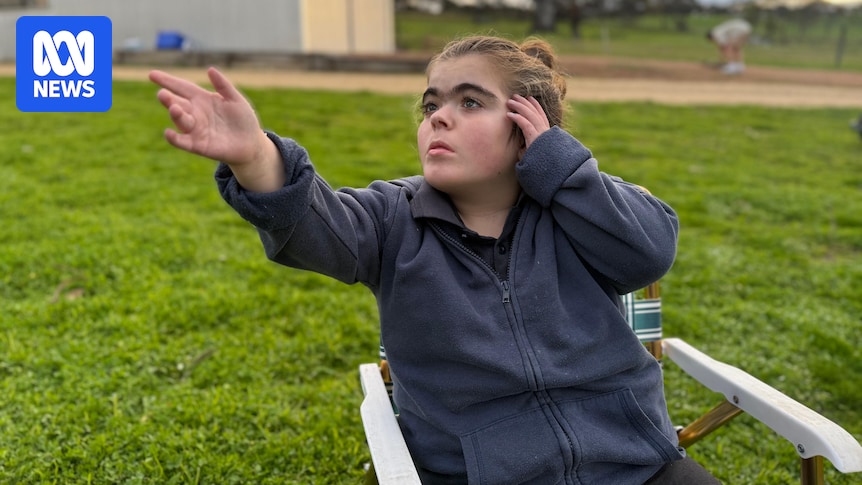
Isla Steed, a 14-year-old from Port Lincoln, South Australia, is a typical teenager in many ways, according to her mother, Kylie Steed. She is described as “a stubborn little person” who enjoys technology and food, and has a favorite word: “no”. However, Isla is set apart by a rare genetic condition known as CHOPS syndrome, a disorder so uncommon that only 34 people worldwide, including just four in Australia, have been diagnosed with it.
CHOPS, an acronym for its symptoms—cognitive impairment, coarse facial features, heart defects, obesity, pulmonary problems, and short stature with skeletal abnormalities—was not identified until 2015. Isla’s diagnosis came four years later, at the age of eight, following an initial misdiagnosis of Cornelia de Lange syndrome, a condition with overlapping characteristics.
The Journey to Diagnosis
When Isla was born, her health was precarious. Weighing just 1.5 kilograms, she spent the first 147 days of her life in the Women’s and Children’s Hospital in Adelaide. During this time, she required a feeding tube and was resuscitated through CPR. The Steed family had to relocate temporarily to Adelaide to access necessary medical care.
Eventually, when Isla was 11, her health stabilized enough for the family to return to their home in Port Lincoln. Despite regional healthcare challenges, Isla has access to a comprehensive range of support services, including speech pathologists, occupational therapists, and physiotherapists.
Global Efforts and Advocacy
Despite the rarity of CHOPS syndrome, families affected by the condition have found solidarity and support through global advocacy networks. In Palermo, Italy, astrophysicist Manuela Mallamaci faced a similar struggle when her son Mario was diagnosed in 2023. She connected with Lainey Moseley, a journalist in Philadelphia, whose daughter Leta was the first person diagnosed with CHOPS in 2015.
Lainey Moseley founded CHOPS Syndrome Global in 2019 to raise awareness and fund research. “Because she was the first diagnosed in the world, I didn’t really have a choice,” Moseley said. “That’s what you do as a rare disease parent when you get a diagnosis and you don’t have a community.”
“In my lifetime, we will have a treatment for CHOPS syndrome,” Moseley expressed with hope.
Scientific Breakthroughs
The discovery of CHOPS syndrome was a result of groundbreaking research by Kosuke Izumi and his mentor, Ian Krantz, in the United States. Their study focused on understanding Cornelia de Lange syndrome, during which they identified three children, including Leta Moseley, with distinct symptoms. This led to the hypothesis of a new genetic disorder.
With the advent of exome sequencing, researchers were able to pinpoint a mutation in the AFF4 gene, leading to the identification of CHOPS syndrome. “This gene plays an important role in directing what kind of function the cell needs to do,” Izumi explained, highlighting the complexity of the disorder.
Looking Ahead: Hope and Challenges
Despite the challenges, Isla remains a happy and loving individual. Her mother, Kylie, acknowledges the difficulties in accessing therapy services due to the rarity of the condition but remains optimistic about the future.
Researchers like Dr. Izumi are hopeful about finding a treatment. “We are using a specialized cell called induced pluripotent stem cell, which can be generated from patient cells,” he said. This innovative approach could lead to breakthroughs in treating CHOPS syndrome.
The global community of CHOPS families continues to advocate for increased awareness and research funding. As efforts to understand and treat the disorder progress, there is hope that future generations will have access to effective treatments and improved quality of life.







